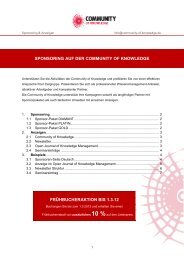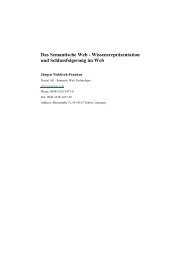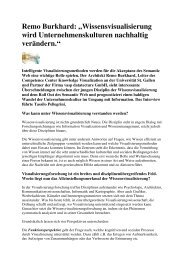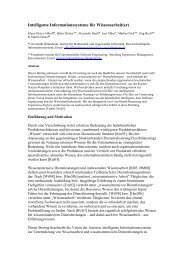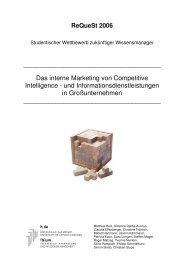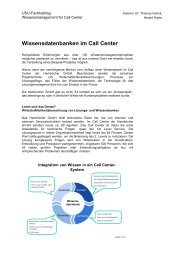OPEN JOURNAL OF KNOWLEDGE MANAGEMENT ...
OPEN JOURNAL OF KNOWLEDGE MANAGEMENT ...
OPEN JOURNAL OF KNOWLEDGE MANAGEMENT ...
Erfolgreiche ePaper selbst erstellen
Machen Sie aus Ihren PDF Publikationen ein blätterbares Flipbook mit unserer einzigartigen Google optimierten e-Paper Software.
Open Journal of Knowledge Management<br />
relevant business topics (estimate the sales of new products). Since Tchibo was asking its employees<br />
for help on a real business issue this signaled that Tchibo values and appreciates the knowledge<br />
of its employees.<br />
In addition to this theme of appreciation, Tchibo also introduced an element of competition by using<br />
rankings which would show the weekly top forecasters from across the organization.<br />
Finally, some small material incentives were added in the form of Amazon vouchers which would<br />
reward the monthly top forecasters.<br />
Once these measure were in place, the Social Forecasting process was launched. Each week<br />
shop managers, warehouse workers and employees from HQ visited the Social Forecasting portal<br />
and made their sales predictions for the upcoming new products (see Fig. 3).<br />
Fig. 3: Forecasting process for new products with Social Forecasting (Source: Author)<br />
The predictions from the crowd where available immediately after the closing of the forecast. No<br />
market research or test sales were required to derive these forecasts. After an initial ramp-up<br />
phase the actual sales figures started to arrive each week. These were entered into the system<br />
which then automatically calculated the top forecasters – those whose forecasts were closest to<br />
the actual sales figures. This gave a boost to participation and was very well received by employees<br />
(Preller and Rudzinski, 2009).<br />
Evaluating Social Forecasting vs. Traditional Forecasting<br />
Ausgabe V/2012 Seite 29<br />
The Social Forecasting process was launched along the existing forecasting process for new<br />
products to allow for a direct comparison of the performance of both approaches. When the actual<br />
sales figures came in the project team computed the forecasting accuracy of both approaches.<br />
Table 1 shows the forecasting accuracy from both approaches. The established new product<br />
evaluation process had a forecasting accuracy of 87% while the new Social Forecasting process<br />
achieved 81% in its first five weeks (Preller and Rudzinski, 2009).



